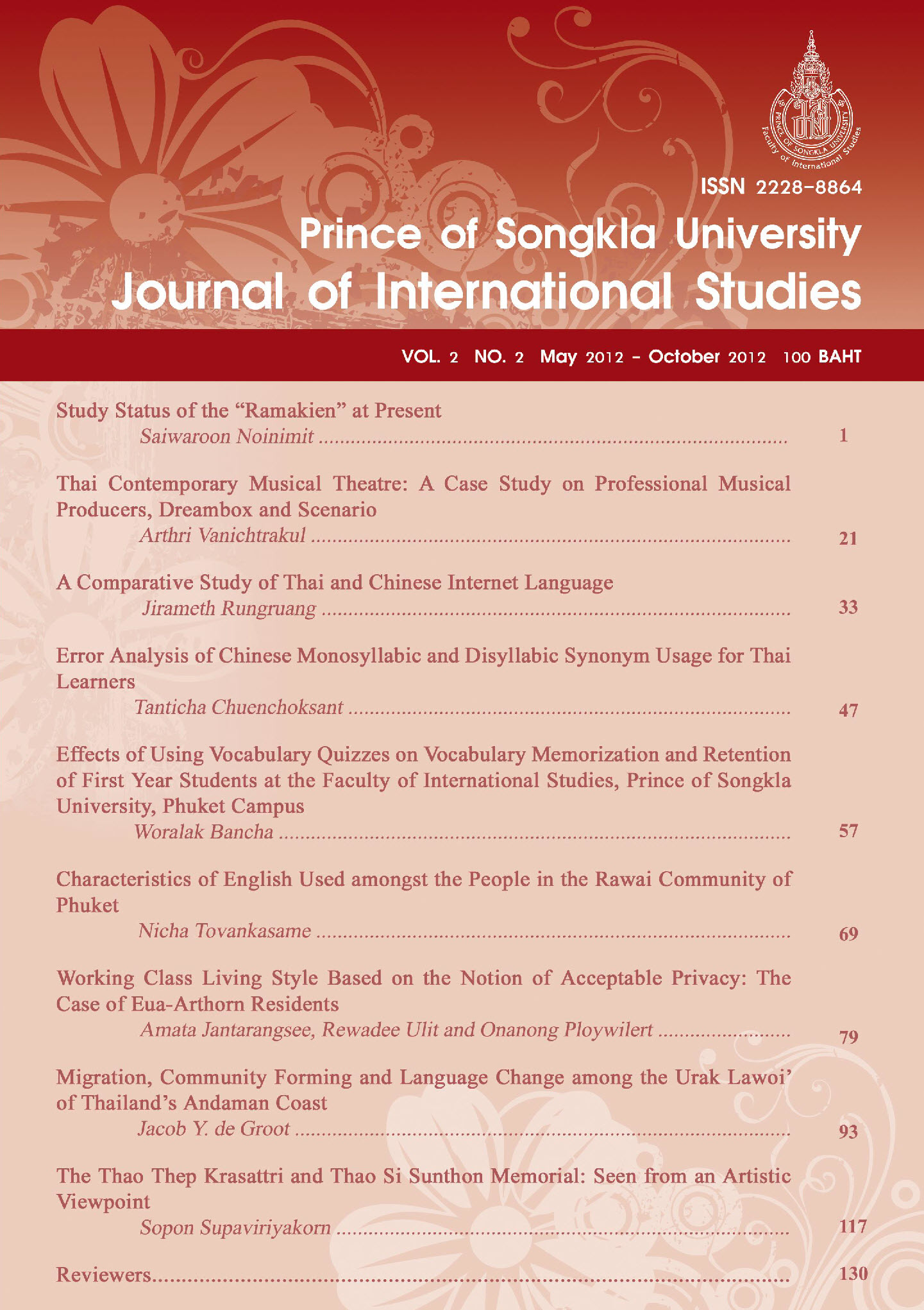Error Analysis of Chinese Monosyllabic and Disyllabic Synonym Usage for Thai Learners
Main Article Content
Abstract
One of the problems in teaching and learning Chinese in Thailand is that learners do not comprehend the differences between the usage of Chinese monosyllabic and disyllabic synonyms, as a result, learners get them muddled up easily. Some words not only have the same or similar meanings, they also have similar forms. Some pairs can be replaced with each other while some cannot. Consequently, this research aimed to study these synonyms in order to find a method to aid teaching and learning. The research has explained the differences between the types of monosyllabic and disyllabic synonyms and their meanings. In addition, some problems affecting learners have been found. Instructors should be aware of them and apply appropriate teaching methodology for more effective teaching and learning in Chinese.
Article Details
Statements and opinions expressed in articles herein are those of the authors and do not necessarily reflect the position of the editors or publisher.
Article, information, text, image, etc. which are published in Journal of International Studies, belong to Journal of International Studies. If anybody or any organization would like to use part or whole of them, they must receive written permission from Journal of International Studies before usage.
References
lamworameth, T. (1994). Chinese-Thai dictionary, new ed. Bangkok: Ruamsarn.
程娟 and 许晓华. (2004). HSK单双音同义动词研究,世界汉语教学,第4期。
Cheng, J. & Xu, X. (2004). A study on the synonymous monosyllabic and disyllabic
verbs in HSK. Global Chinese teaching, 4. 樊志红. (1994). 同义的单双音节词语的辨析,新疆教育学院学报第1期。
Fan, Z. (1994). Analysis of the synonymous monosyllabic and disyllabic words.
Journal of Xinjing Education Institute, 1.
季瑾. (2005). HSK甲级单双音同义动词部分不可替换的类型探析,语言教学与研
究, 第5期。
Li, J. (2005). On the categories of local insubstitutability between monosyllabic verbs
and disyllabic verbs of the meaning in HSK. Language teaching and linowistic
studies, 5.
吕叔湘,(1963). 现代汉语单双音节问题初探.中国语文第1期。
一
月
um
Wu, S. (1963). Basic of modern Chinese monosyllabic and disyllabic problem. Journal
of Chinese Language, 1. WIX. (2001). En feixi M axi & BEWE. BATETX*.
Xie, H. (2001). Modern Chinese Monosyllabic and disyllabic synonym selection
limited constraints. Geneva: University of Geneva.
E. (1956). FP fiXa BATA. *, 19. Zhu, D. (1956). Study of adjective in modern Chinese. Journal of Language Research, 1.


